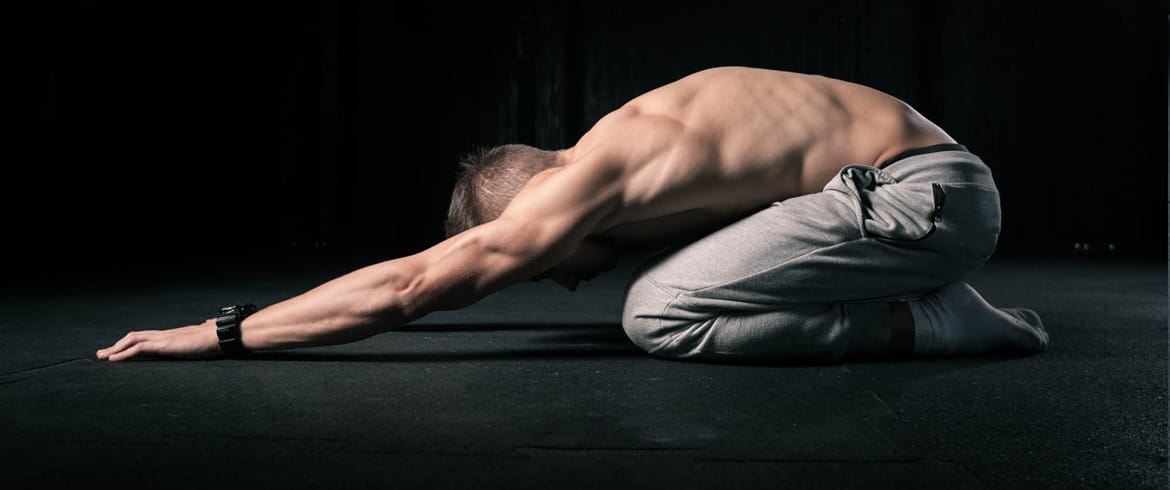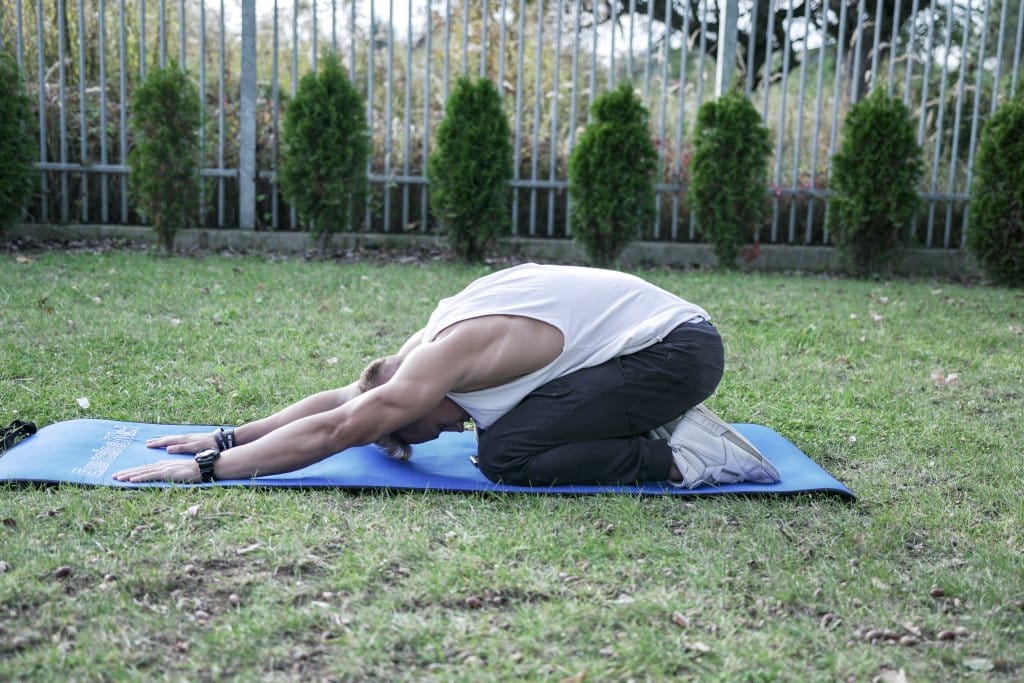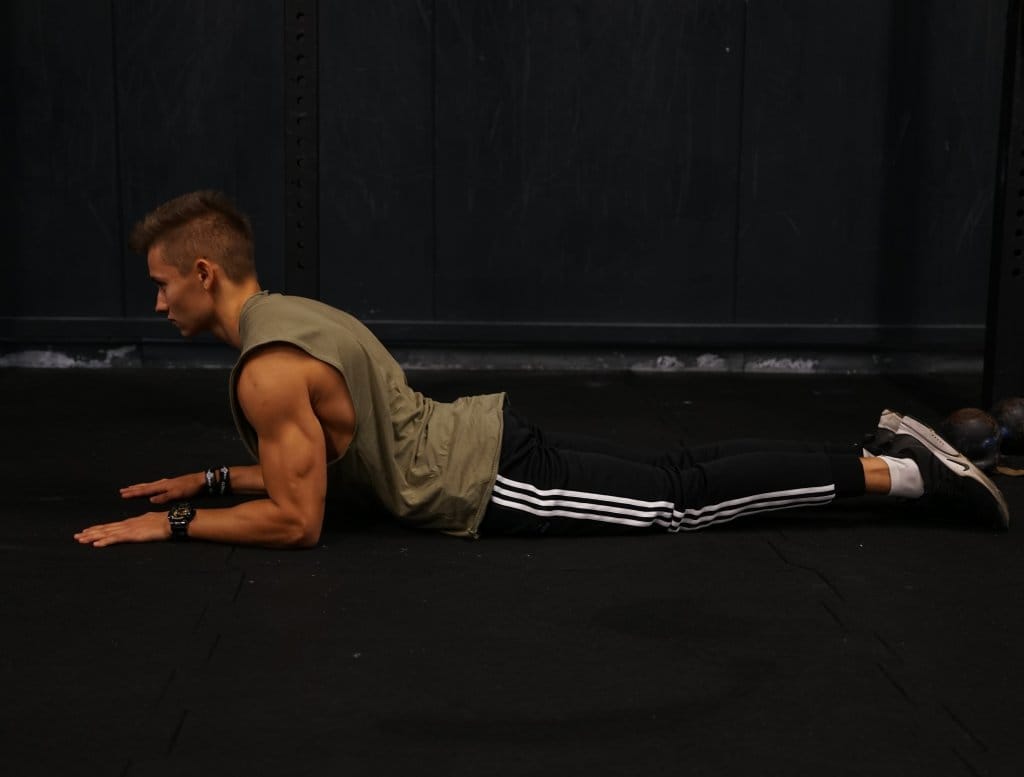
How to stretch back
Have you ever wondered why, when you feel an intense pain in your back or lower back, it seems like having a knife planted into them?!You are not probably aware of one important concept, that is:
Aches and pains of different nature can affect the entire area of the back
To be more specific, we can call this area posterior back chain, which includes all main muscles of the back from head to toes, hence:

- a) ERECTOR SPINAE: also known as spinal erectors are a set of little muscles and tendons surrounding the spine, that straightens and rotates the back
- b) UPPER BACK MUSCLES: where is possible to include trapezius, infraspinatus, rear deltoids, rhomboids, teres major and minor
- c) LOWER BACK MUSCLES: here we can include the main bigger muscle of the back that is latissimus dorsi together with erector spinae and thoracolumbar belt
- d) GLUTES: better known in anatomy as gluteus maximus, is the main extensor muscle of the hip.
It can be mainly responsible of some of the most common aches and pains reflected in the lower back - e) HAMSTRINGS: with which is defined the group of three muscles of the posterior thigh; it has the function to flex/bend the knee and favors the hip extension
- f) CALVES: being the back portion of the lower leg, it composes of gastrocnemius, soleus and tibialis posterior, all together making the posterior compartment of the leg
In most of the cases, if not talking about aches and pains bones-related, the ones muscle-related can generate from sudden contractions of different types of muscles communicating one another.
We can group these muscles in the following ones:
- Abdominal belt: the contraction of the abs can generate an opposite force, hence possible tensions in back/lower back area.
It seems strange, but after trying out myself to lay down supine and massage my abdominal belt, especially in the zone where the stomach is located, I started to feel a big relief in my lower back.
The massage that you should provide to such part has to be very deep, you need to lay down supine completely relaxed just to favor your fingers to penetrate the muscle tissues while massaging - Quadriceps: if you practice sports such as running, basketball, volleyball and in general, all those sports where vertebrae are often under pressure because of the typical movements performed, it’s likely to happen that contractions of the quads can generate tensions in back/lower back
- Iliopsoas: a particular type of muscle that, as we said when analyzing hip flexors, can be responsible of hips’ tightness and lack of flexibility
- Glutes: another part of the body often underestimated in terms of being responsible for back/lower back, aches and pains.
As you can notice from the picture above, glutes divides in gluteus medius and maximus, these two parts can be subject to tensions directly reflected into the lower back area - Hamstrings: representing the muscle group in the back of the leg, is responsible as well of possible tensions that, as a reflection, can target at once back and lower back.
A clear example can be the contraction of the bicep femoris reflecting into the gluteus medius and indirectly into the lower back
- Abdominal belt: the contraction of the abs can generate an opposite force, hence possible tensions in back/lower back area.
As you can see, the range is quite wide and includes all those muscles that are strictly connected and engaged for different movements of the body such as flexion, torsion, bending, kneeling, extension etc.
As I mentioned also in some of my previous articles related to back and lower back, it is very important when facing back/lower back pain, to consider stretching progressively all the muscles mentioned above.
If you suffer of slipped disc, of course, the disease itself can be quite painful at the beginning, but if treated with the proper “tools”, hence stretching, massaging and also swimming, surely the pain can lower, eventually disappear and occur less and less later on.
I just mentioned swimming because from my personal experience I noticed that the activity in the water of course favors an easier general de-load of the bodyweight.
For instance in winter I go swimming every Saturday morning and it’s incredible the feeling after one hour of intense freestyle; it helps a lot to stretch the spinal column, hence all the vertebrae and so provides a general relief also to the lower back.

Let’s now take a closer look to which are the main back and lower back stretches you can perform, in order to reduce general back pain:
- HAMSTRINGS STRETCH: probably one of the most common stretches that targets the hamstrings in its execution, but provides also indirect relief to back and lower back.
The fact that, while performing this stretch you have to lean forward keeping your back and legs straight and arms are just following the movement, generates an intense relief to all the back muscles at once.
You can perform this exercise both in static or dynamic way, just make sure that, when you perform it in static way hold each position for maximum 10-15” and then release before going to the next rep - SCISSORS HAMSTRING STRETCH: as a variation of the previous common exercise, here the intensity of the stretch will be higher due to the position you have to take.
In particular, starting always from a standing position place one leg (hence its foot also) in front of you while the other one remains into position.
From here start slowly to bend over on one leg at a time, until you get as close as you can to the quad or knee (when you’re particularly flexible); regarding your back, you can keep it straight (more intense) or round it a bit in order to get closer to the quad.
I recommend a hold of at least 10” also in this case - QUADRUPED TO DOWNWARD FACING DOG STRETCH: another very useful exercise that can provide an intense stretch to your hamstrings (first target), glutes, lower back, shoulders and lats.
Start from the classic quadruped position (hands, knees and feet on floor); slowly elevate your butt while extending your legs (initially bent) and aim to form an “A” shape between hands and feet shoulder-width apart.
You can decide the intensity of the stretch by trying to keep both feet on floor at every repetition or, if you are not yet able, also have heels elevated from it (it is not a mistake, is a lack of flexibility you can work on).
Being a dynamic stretch, you can consider performing 3 sets x 5-10 slow reps - DOWNWARD FACING DOG: common exercise coming from Yoga where the execution looks similar to the previous one, with the main difference that this time you perform a static stretch, not a dynamic one like before, hence your goal here is to keep the “A” shape between hands and feet for at least 10” each set
- PIKE STRETCH: in absolute, the most common type of stretch that targets mainly the hamstrings and lower back
From a sitting position in L shape, start slowly to lean forward with your upper body so to try to reach out with your fingertips, the tip of your toes.
Make sure not to round your back while stretching, but to keep it straight so to provide tension also in your lower back and perform it correctly - ONE LEG PIKE STRETCH: another variation very common in the stretching world, but that requires same attention while performing it as the pike stretch.
In this case, having one leg folded to the inner side of the opposite one, make sure that before leaning forward with your back straight, you have your hips in line, not moved aside.
In this way, you’ll be able to focus on stretching a single glute/hamstring at a time - SEATED PIKE LEG LIFTS: this exercise comes from gymnastics and it is very useful in order to provide the entire posterior chain with relief and stretch thanks to a dynamic movement.
Being indeed a typical static active stretching exercise, allows you to work on flexibility and mobility at once.
In order to perform the seated pike leg lifts (single leg or together), start from a sitting position forming an L; place both hands to the sides of your legs in front of you not at hips’ height.
From here the first step would want you to lift one leg at a time since cramps can occur very often especially at the beginning.
Once you become more used to it, you can then consider lifting both legs together.
If you combine this exercise together with the typical pike stretch, the efficiency of the stretch in back and lower back will be doubled and more effective.
I recommend performing at least 3 sets of 10 reps; in case you perform it one-legged the 10 reps will be per each one - SEATED PIKE LEG LIFT HOLD: not by chance, for the previous exercise exists also a static way of execution, hence whether you decide to perform it single leg or together, the goal is to hold legs up in the pike position for sets.
Both seated pike leg lifts and hold are great exercises also for developing the L-sit/V-sit, since they target the posterior back chain in order to increase its flexibility.
- SPHINX AND COBRA STRETCH: other two exercises coming from Yoga that are mainly targeting lower back muscles by stretching it in an uncommon position.
Sphinx stretch wants you to start from laying down on the ground in relaxed supine position; make sure to come all the way up just with your upper back as well as with the head so to get into position on elbows in line with shoulders just like a sphinx.
Look straight with your head and focus on pushing down your hips to the ground so to stretch properly the lower back.
Cobra stretch differs from the previous one just for the fact that the stretch is more intense.
Arms in this case are not bent, but completely extended while maintaining the same position as before with head up while laying down supine on the ground.
Of course the range of back and lower back stretches is far bigger than this short list provided above, that is instead just a taste of which are the most common exercises targeting these areas.
I wanna emphasize once again the importance of dedicating time to strengthen lower back and increase the overall flexibility and mobility of all back muscles, because they are the foundation of a healthy body that can face whichever kind of load depending on which sport you decide to practice.

